In this post, we delve into the captivating world of tires to bring you an in-depth comparison between two renowned brands: Goodyear vs Sumitomo.
Join me as we explore their rich histories, evaluate their dry, wet, and snow performances, analyze their mileage warranties and average lifespan, weigh their prices, and uncover the pros and cons.
By the end, we’ll unveil which brand reigns supreme in the tire kingdom.
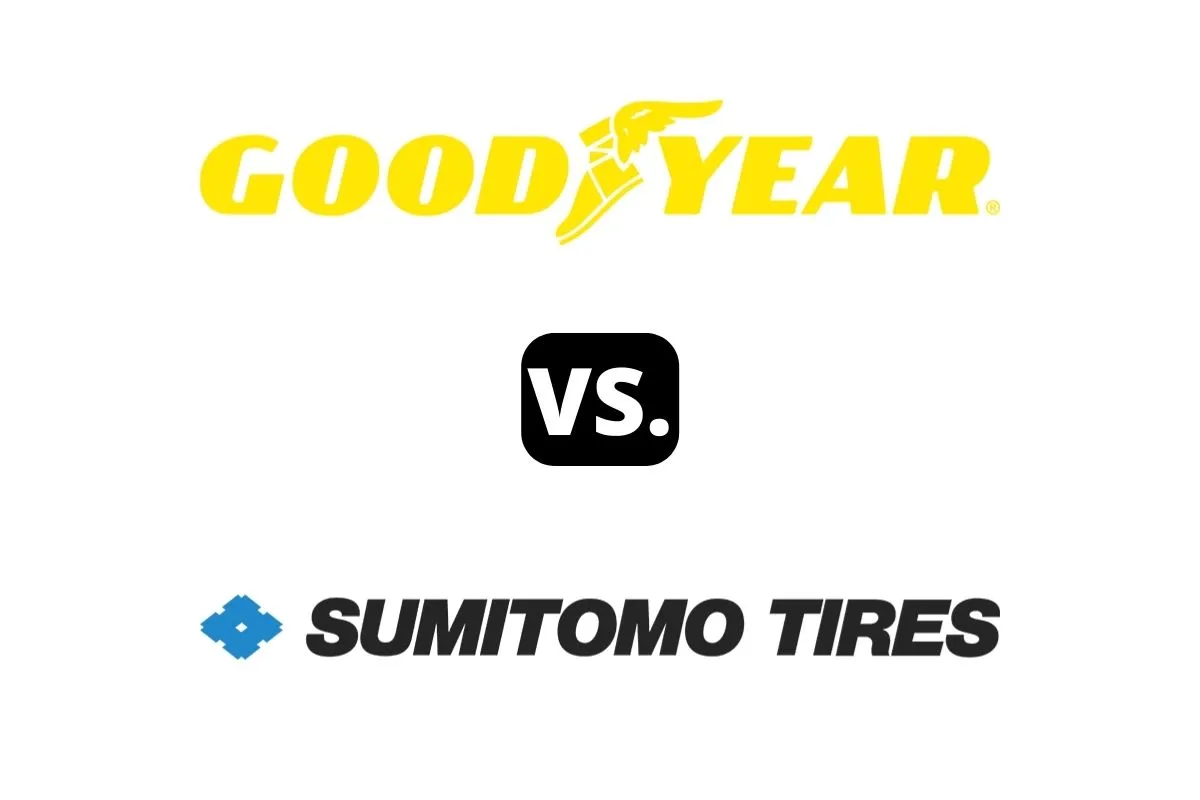
Goodyear vs Sumitomo – Comparison Table
| Goodyear | Sumitomo | |
| Country of Origin | United States | Japan |
| Year Founded | 1898 | 1909 |
| Made In | mostly in Akron, United States, but the company also has factories in Venezuela, India, Turkey, and Malaysia | Japan and the United States |
| Parent | The Goodyear Tire & Rubber Company (USA) | Sumitomo Rubber Industries, Ltd. (Japan) |
About the Brands

1. Goodyear
The Goodyear brand, founded in 1898 in the United States, is a renowned tire manufacturer and a subsidiary of The Goodyear Tire & Rubber Company.
It has a rich history that spans over a century.
Goodyear has consistently displayed a commitment to innovation, quality, and performance.
Throughout the years, they have developed groundbreaking technologies and patented tire designs that revolutionized the industry.
The brand’s success can be attributed to its dedication to providing reliable tires for various vehicles, including cars, trucks, motorcycles, and aircraft.
Goodyear’s products have garnered a reputation for their durability, traction, and superior handling.
Over time, the company has expanded its global footprint, establishing a strong presence in numerous countries.
Today, Goodyear remains a trusted and respected name in the tire industry, continuously pushing boundaries to meet the evolving needs of consumers worldwide.
Mostly Known for Manufacturing Tires For:
- Passenger cars
- SUVs (Sport Utility Vehicles)
- Light trucks
- Commercial trucks
- Buses
- Motorcycles
- Racing cars
- Farm equipment
- Heavy earth-moving machinery
- Aircraft
- Bicycles
2. Sumitomo
Sumitomo, a renowned tire brand, has a rich history that began in 1909 in Japan.
Founded by Sumitomo Rubber Industries, the company has become a global leader in the tire industry.
With over a century of expertise, Sumitomo has established a reputation for producing high-quality and reliable tires for various vehicles.
Over the years, Sumitomo has continuously evolved its tire manufacturing techniques, incorporating cutting-edge technology and innovative designs.
This commitment to innovation has allowed Sumitomo to offer a wide range of tire options suitable for diverse road conditions and vehicle types.
As a Japanese brand, Sumitomo has embraced the country’s ethos of precision engineering and meticulous attention to detail.
This commitment to excellence has earned the brand a loyal customer base worldwide.
Today, Sumitomo tires are known for their durability, performance, and excellent traction, providing drivers with a safe and comfortable driving experience.
With its longstanding history and affiliation with Sumitomo Rubber Industries, the Sumitomo brand remains a trusted choice for drivers seeking superior tires that combine Japanese craftsmanship, innovation, and reliability.
Mostly Known for Manufacturing Tires For:
- Passenger cars
- SUVs (Sport Utility Vehicles)
- Light trucks
- Medium trucks
- High-performance and racing vehicles
- Motorcycles
- Agricultural applications
- Commercial vehicles
Differences
1. Dry Performance
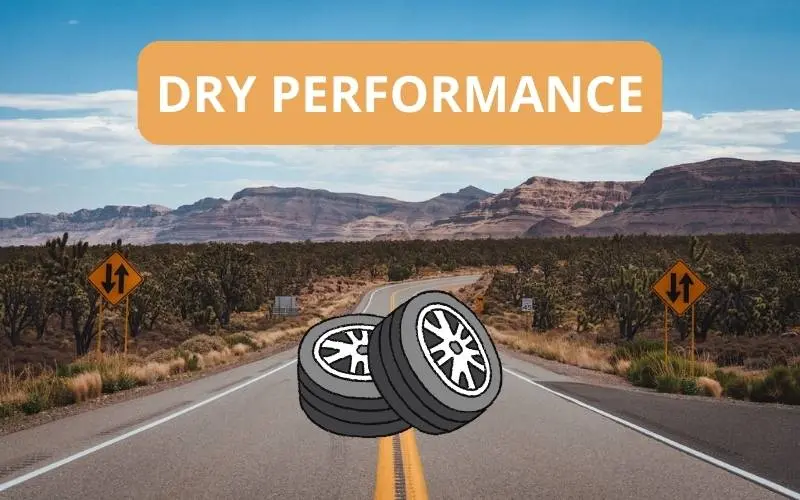
I’m going to compare the performance of two summer tires as they are the ideal type in dry weather.
I’m taking a look at the Goodyear Eagle F1 Asymmetric 3 vs the Sumitomo HTR Z5.
As the one giving the dry performance rating from 1 to 5, I would rate the Goodyear Eagle F1 Asymmetric 3 at 4.5 and the Sumitomo HTR Z5 at 4.4.
The Goodyear tire has received highly positive ratings for its short dry braking distance, good handling speed, and remarkable dry traction.
Meanwhile, the Sumitomo tire showcases superior dry handling, a focus on maximum performance in summer conditions, and the inclusion of wide circumferential grooves for enhanced traction.
Both tires excel in dry conditions, but due to their similar performance levels, it’s a tie between them.
2. Wet Performance
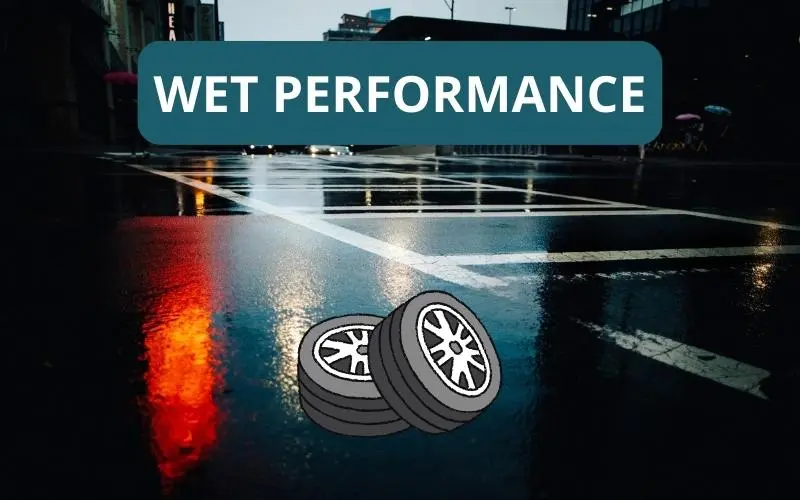
For the wet performance, I’ll be comparing the Goodyear Assurance WeatherReady vs the Sumitomo HTR A/S P02.
In my evaluation, I rate the Goodyear Assurance WeatherReady’s wet performance at 4.3 out of 5.
Its unique features like the asymmetric tread pattern and traction grooves are designed to effectively expel water, indicating a focus on reliable wet traction.
Positive feedback on handling and traction in wet conditions further supports its wet performance.
As for the Sumitomo HTR A/S P02, I rate its wet performance at 4.4 out of 5.
Its silica-enhanced tread compound and asymmetric tread pattern contribute to grip and stability on wet roads.
Mention of enhanced wet performance through design and good ride comfort add to its score.
While wet braking details are limited, the suggestion of improved wet braking in its next-generation version indicates satisfactory performance.
Overall, both tires offer similar levels of wet performance, resulting in a tie.
3. Snow Performance
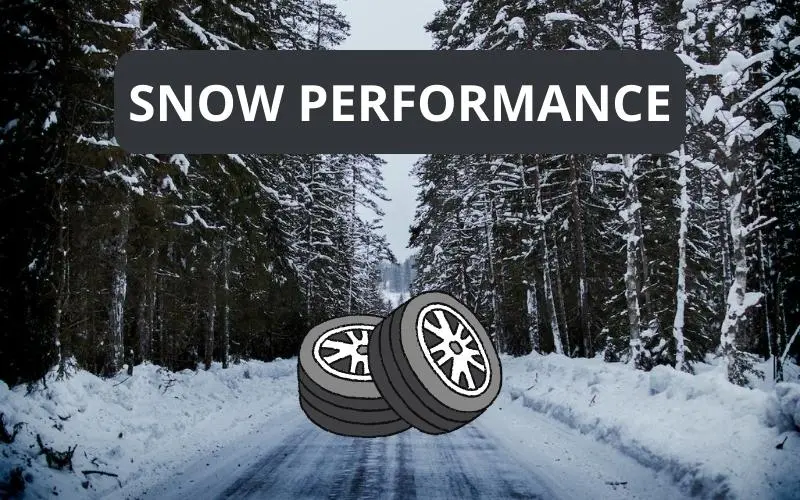
We all know that you need dedicated winter tires if you’re going to be driving on harsh winter conditions.
That’s why I’ll be comparing the snow performance of two specialized winter tires – Goodyear Ultra Grip Ice WRT vs Sumitomo Ice Edge.
In my personal evaluation, I rate the Goodyear Ultra Grip Ice WRT tire with a snow performance score of 4.4 out of 5.
This rating reflects its Winter Reactive Technology, Winter Grip compound, directional tread design, and semi-solid center rib that contribute to reliable performance on snow and ice.
Similarly, the Sumitomo Ice Edge tire receives a snow performance score of 4.5 out of 5, thanks to its advanced technology, excellent traction, and studdable option.
Ultimately, both tires offer commendable snow performance, making it a tie between them.
4. Mileage Warranty and Tread Life
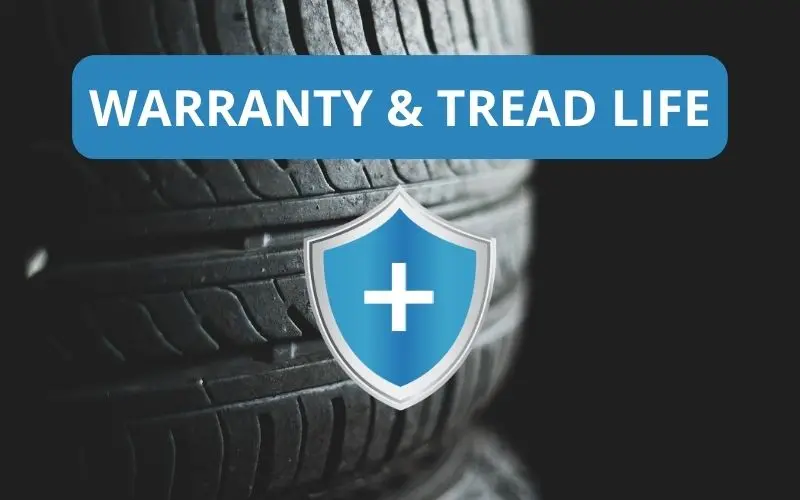
| Goodyear | Sumitomo | |
| Treadwear Warranty | up to 80,000 miles tread life warranty | up to 90,000 miles tread life warranty |
| Average Tread Life | Goodyear tires are expected to last anywhere between 30,000 to 65,000 miles on average. | Overall, Sumitomo tires are known to have a relatively high lifespan, with most models lasting between 55,000 to 70,000 miles. |
Based on my research, the Goodyear and Sumitomo tires have different mileage warranties and average lifespans.
Goodyear offers a treadwear warranty of up to 80,000 miles, while Sumitomo provides a warranty of up to 90,000 miles.
On average, Goodyear tires last between 30,000 to 65,000 miles, while Sumitomo tires tend to have a relatively higher lifespan, ranging from 55,000 to 70,000 miles.
Overall, Sumitomo tires offer a slight advantage in terms of both warranty and average lifespan.
5. Prices
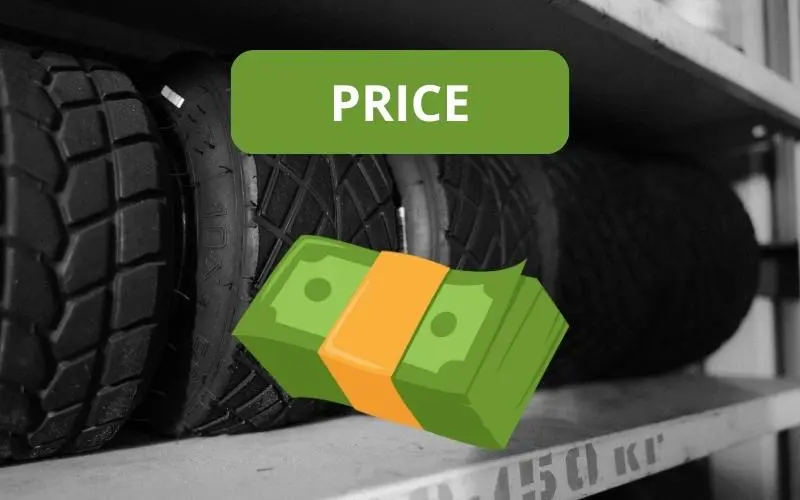
In this section, I’ll be taking a look at the price ranges of both tire brands – Goodyear vs Sumitomo.
I’ll be using one of the biggest tire and wheel retailers in the US for this comparison – Discount Tire.
Here is a comprehensive table that showcases each brand has to offer:
| Goodyear | Sumitomo | |
| Average Price Range (Discount Tire) | $75 to $1,027 /ea | $84 to $475 /ea |
| Cheapest Tire (Discount Tire) | Eagle RS-A goes from $75 – $299 /ea | HTR Enhance LX2 goes from $84 – $162 /ea |
| Most Expensive Tire (Discount Tire) | Eagle NCT5 goes from $317 – $1,027 /ea | Encounter AT goes from $146 – $475 /ea |
6. Pros and Cons
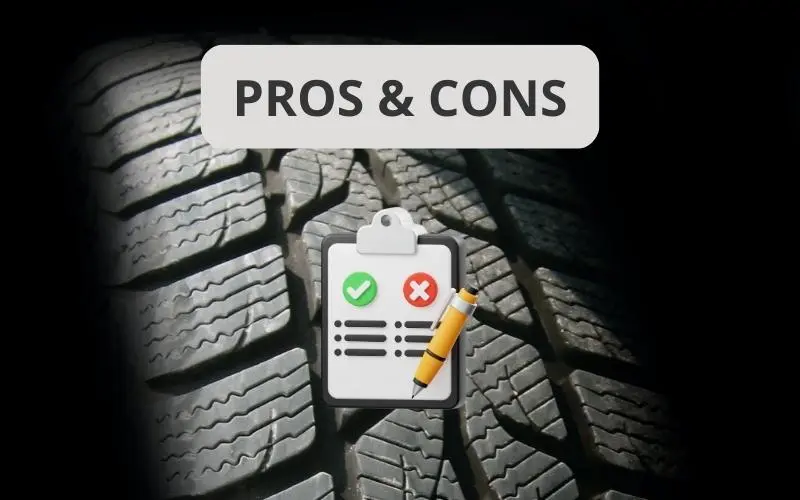
Goodyear
| Pros | Cons |
| ✔ Wide range of tire options for different types of vehicles | ❌ Goodyear tires can be more expensive compared to other brands |
| ✔ Goodyear tires are known for their high quality and durability | |
| ✔ Long history of producing specialized tires for racing |
Sumitomo
| Pros | Cons |
| ✔ Generally considered to have good performance, including grip, handling, and braking | ❌ None |
| ✔ Sumitomo tires are known for their affordable prices | |
| ✔ Widely available |
7. Popular Tires

Here are some notable tires from Goodyear:
- Eagle F1 Asymmetric 3
- Assurance WeatherReady
- Wrangler All-Terrain Adventure with Kevlar
Some of Sumitomo’s best tires are shown below:
- HTR A/S P02
- HTR Enhance L/X
- HTR Z5
Which Is the Better Brand Overall?

Based on the criteria of dry performance, wet performance, snow performance, mileage warranty, average lifespan, pros, cons, and price range, it is evident that both Goodyear and Sumitomo offer excellent tires.
Due to their similar performance levels in dry, wet, and snow conditions, along with comparable mileage warranties and average lifespans, I declare this comparison a tie.
However, it’s worth noting that Sumitomo tires have a slight advantage in terms of warranty and average lifespan, while Goodyear tires have a wider range of options and a history of specialized racing tires.